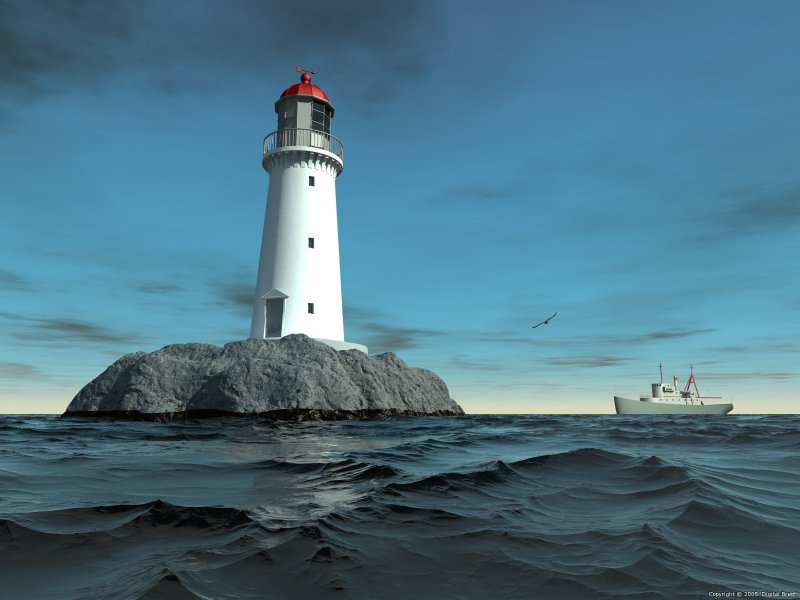The lighthouse is loosely modelled on the Cape Schanck lighthouse on the Morning Peninsula south of Melbourne. The surface of the tower has been modelled as concrete using an isosurface cone with small quantity of noise added to mimic a rough painted concrete finish. The proportions of the tower and the light room at the top of the tower have been altered to make the lighthouse more attractive.
The sea and the rock that the lighthouse sits on are constructed from isosurfaces, using noise functions to generate the shape.
The sea uses two noise functions; f_noise3d creates a general rolling motion on the surface, while f_ridged_mf generates the rest of the wave pattern. Photons have been used to get a more realistic finish.
The rock is based on a rounded box function that has been scaled so that it appears as a trapezoidal box. To this function are added two noise functions. The f_noise3d function is used to generate the wavy appearance of the rock, while the f_agate function creates the more detailed texture of the rock. The tide mark on the rock is an isosurface object that with the assistance of intersection and difference statements is used to cut the rock into two parts along the water line. A wet texture is applied to the rock below the water line, while a dry texture is applied to the rock above the water line.
The bird originated as photo that I had taken. The image was scanned from the negative using a film scanner and the sky replaced a transparent colour.
The ship is modelled on an Abnaki class US ocean going tugboat. The ships hull is modelled using a blob statement to approximate the smooth curves of the hull. The rest of the ship is modelled using simple CSG objects using the vast number of archival photos of Abnaki class ships on the Internet as reference material.
A two pass radiosity method has been used to speed up the render times and because the surface of the tower required a very low value for pretrace_end to prevent the radiosity blocks from the pre-trace steps showing up in the final render.




